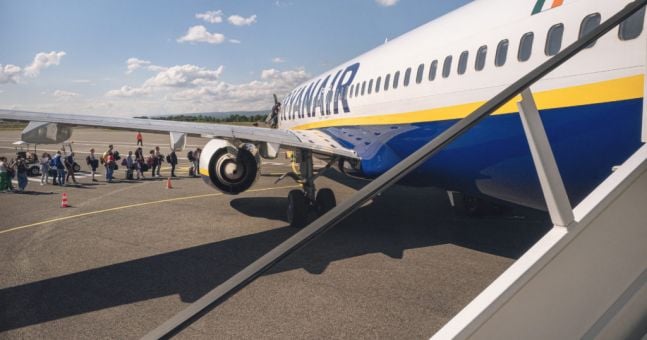Due to passenger restrictions, Christmas fares for single journeys from London to Dublin could rise to over £400
RYANAIR boss Michael O’Leary said passengers using Dublin Airport could face higher fares this Christmas – potentially by as much as €500 (around £430) due to the passenger cap at Dublin Airport.
To ensure that the airport’s annual passenger cap of 32 million introduced by the Irish government is not exceeded next year, the airline said a reduction of up to one million passengers could be necessary.
The Irish Aviation Authority is responsible for allocating slots at Dublin Airport and has already set a cap of 14.4 million passengers for the coming winter season to ensure that the planning permission is not exceeded. This is the first time that a seat capacity limit has actually been applied at this airport.
Ryanair said airlines using Dublin Airport have been warned that they will not receive additional slots for Christmas flights this winter.
“We cannot offer slots at Christmas, nobody will be allowed to offer additional flights and that is why airfares this Christmas will probably be double or triple what they have been in recent years – there will not be enough capacity to meet demand,” he said.
As a result, a one-way flight between Dublin and London over Christmas could cost €500, said Mr O’Leary.
In addition, airfares will be higher next summer when the number of seats on the aircraft will have to be reduced to comply with the Irish government’s current passenger cap.
“Such cuts will cause real damage to Irish tourism and Irish jobs and will result in significantly higher airfares for Irish citizens and their families travelling abroad in the summer of 2025,” Ryanair boss Michael O’Leary said on RTÉ’s Morning Ireland programme.
The Irish Aviation Authority (IAA) has now contacted all affected airlines and the Dublin Airport Authority and asked for suggestions on how the reduction can be put into practice and how the suggestions can be implemented.
This prompted O’Leary to say on RTÉ that the IAA “doesn’t even know what it’s up to”. He wants the Government to remove the cap that was introduced as part of the planning permission for the airport’s second terminal.
However, many environmentalists welcome the cap and higher airfares as a means of reducing emissions from air travel. Emissions from air travel currently account for 2.5 percent of global CO₂ emissions and have contributed around four percent to global warming.
However, for environmental reasons, the cap was not implemented at Dublin Airport. The passenger number cap at Dublin Airport was set by An Bord Pleanála (the Irish planning authority) in 2008 to alleviate problems with the road transport infrastructure to and from the airport.
The upper limit is 32 million passengers per year. The operator, Dublin Airport Authority, estimates that demand is between 34 and 35 million passengers per year.
The cap has caused problems for passengers, airlines and the economy. Both the Irish Tourism Industry Council (ITIC) and airlines have warned that the cap threatens the tourism industry and undermines government policy for the sector. Tourism is a major contributor to the Irish economy.
According to the report, nine out of ten tourists arrive by plane, and 75 percent of tourists are foreign tourists.
Members of the Irish community in the UK frequently use the London to Dublin route and many feel that there is no viable alternative to flying if a return flight to Ireland is required.
Dublin Airport is the 13th.th The airport is the busiest in Europe (latest figures available for 2023). Aviation experts have also pointed out that Ireland is the only island state in the EU, along with Malta, and should therefore receive more EU funding to either improve infrastructure or provide alternative routes for residents and visitors.
Meanwhile, Ryanair has announced that 10 million passengers have passed through Bournemouth Airport since it began operating flights to/from Bournemouth in 1996. Ryanair was the first low-cost airline to operate at Bournemouth Airport and has expanded its presence from a single route to/from Dublin to a 20-route offering connecting 9 countries across Europe with its two aircraft based at Bournemouth.


